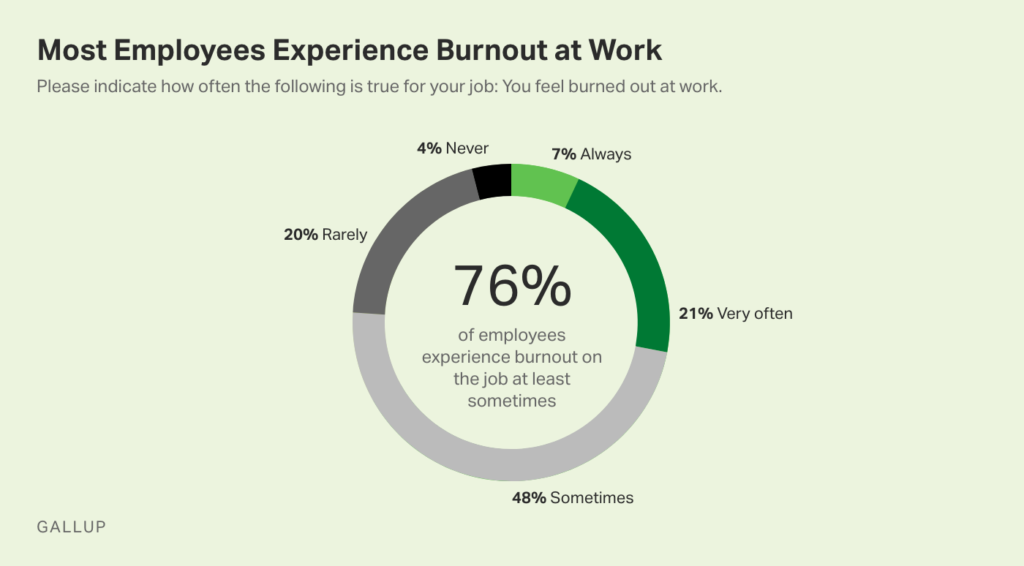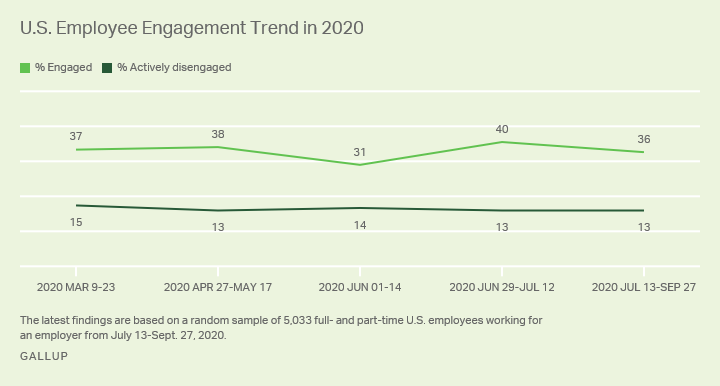
Burnout is what happens when you try to avoid being human for too long. – Michael Gungor
A first-grader became curious because her father brought home stacks of work from the office each night. Her mother explained, “Daddy has so much to do that he can’t finish it all at the office. That’s why he has to bring work home at night.”
“Well then,” asked the child innocently, “why don’t they put him in a slower group?”
While meant to be humorous, that story is a reflection of reality for many. The work never ends. There never seem to be enough hours in the day to get it all done. The stress is real. Burnout is inevitable. Can you relate?
But is it really the daily number of hours a day that you work that is the primary contributing factor to the source of your burnout?
The results from a Gallup report indicate that while the number of hours people work each week does matter, burnout risks increase significantly when employees exceed 50 hours and climbing even higher after 60 hours. A foregone conclusion, right?
Would you be surprised to learn that the survey found that it wasn’t the number of hours worked that caused the burnout? It was how people experienced their workload that had a stronger influence on burnout than hours worked.
According to the survey, engaged employees who have job flexibility tend to work more hours per week than the average employee, while reporting higher well-being. When people feel inspired, motivated, and supported in their work, they do more work and that work is significantly less on their overall health and wellbeing.
The top five factors that correlate most highly with burnout in the Gallup survey are:
- Unfair treatment at work
- Unmanageable workload
- Unclear communication from managers
- Lack of manager support
- Unreasonable time pressure

We know that burnout is real. 76% of the respondents to the survey report experiencing burnout on the job at least some time. Have you?
Leaders can make a real difference when it comes to how their people experience their work and as a result improve their personal wellbeing. Here are a few considerations.
Make the environment a priority
It’s not the work that your people shy away from. They shy away from toxic environments that hinder them. When you make the environment in which your people work a priority then you will cut down on the stress, burnout, and the other negative effects that flow from it.
Rightfully empower your people
Take a holistic approach to leading your people. There’s more to your people than their skill sets and the work that they produce. Think in terms of the whole person and seek out additional ways to serve them. When your people are empowered to work in a healthy environment and live healthier lives (mentally, physically, spiritually) they will thrive.
Intentionally be aware
Your degree of awareness makes a difference. But unfortunately, it’s a trap many leaders fall into. Most leaders are not wired to notice warning signs of burnout and by the time they do, it can be too late. As a leader, you can better serve your people by being more proactive not just about the environment that you create but in the relationships you develop. Don’t leave it to chance, make it a priority.
Share accountability
When one suffers, all suffer. When everyone on your team takes responsibility for the well-being of your workplace environment and the well-being of its people, then the cases of burnout and stress can be reduced. In order for that to happen, everyone must take ownership. Shared accountability equals shared responsibility. When you have each others’ backs you can have everyone at their best.
How are you improving your work experience?
©2021 Doug Dickerson

Employee Engagement: Creating Space for Engaged Employees and a Healthy Culture
A new e-book from Doug Dickerson and Dr. Elizabeth Stincelli
This new e-book is a collaborative effort of our shared passion for healthy workplaces and engaged employees. Stay tuned for more details!













